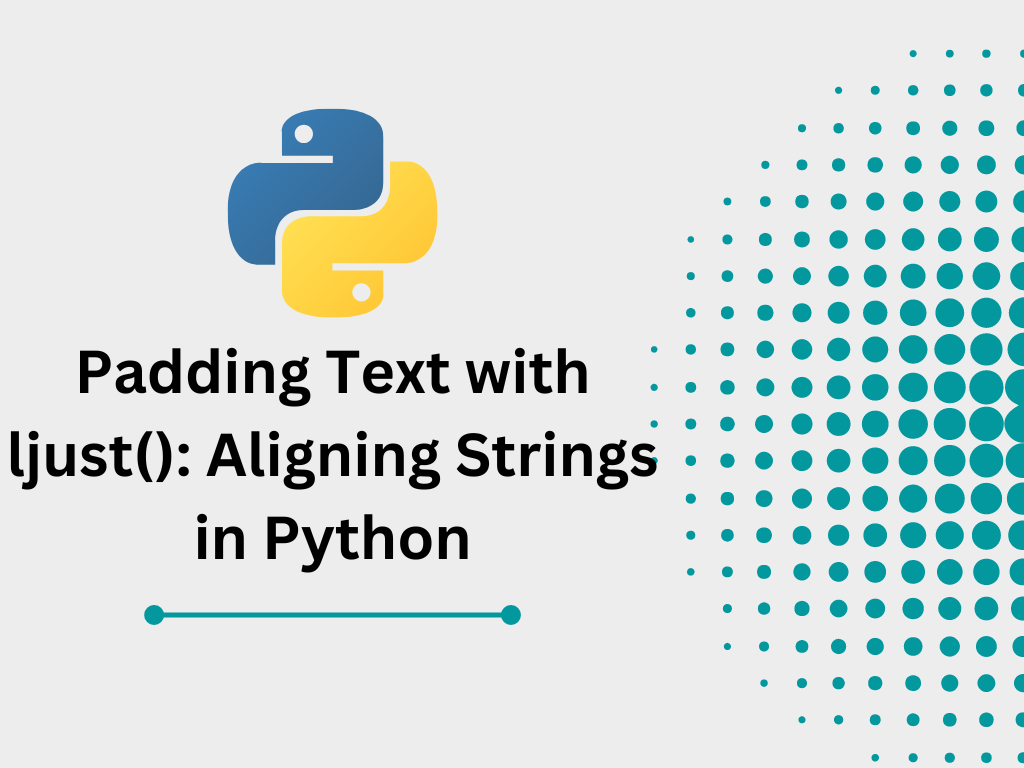
Introduction:
String manipulation is a crucial aspect of Python programming, and Python provides a variety of built-in methods to handle strings effectively. One such method is ljust(), which enables you to align text by left justifying a string within a specified width. In this blog post, we will explore the ljust() string method in Python, understand its functionality, and provide illustrative examples to demonstrate its usage.
Understanding the ljust() Method: The ljust() method in Python is used to left justify a string within a specified width. It pads the string with a specified character (defaulting to a space) to reach the desired width. This method is particularly useful when aligning text in a formatted output.
Syntax:
The syntax for the ljust() method is as follows:
string.ljust()Now, let’s dive into practical examples to understand how the ljust() method works.
Example 1:
Basic Usage
text = "Hello"
result = text.ljust(10)
print(result)Output:
HelloExplanation: In this example, the ljust() method is used to left justify the string "Hello" within a width of 10. Since the string has a length of 5, the method pads the remaining 5 characters with spaces on the right side to reach the desired width.
Example 2:
Specifying a Custom Fill Character
text = "Hello"
result = text.ljust(10, "*")
print(result)Output:
Hello*****Explanation: In this example, the ljust() method is used to left justify the string "Hello" within a width of 10. The method pads the remaining 5 characters with asterisks (*) on the right side to reach the desired width.
Example 3:
Width Less Than String Length
text = "Hello"
result = text.ljust(3)
print(result)Output:
HelloExplanation: In this example, the ljust() method is used with a width of 3, which is smaller than the length of the string "Hello". Since the width is insufficient to accommodate the entire string, the method does not modify the original string and returns it as is.
Example 4:
Empty String
text = ""
result = text.ljust(8)
print(result)Output:
Explanation: In this example, the ljust() method is used with an empty string. Since there are no characters to justify, the method pads the string with spaces to reach the specified width.
Conclusion:
The ljust() method in Python is a valuable tool for left justifying strings within a specified width, enabling precise alignment in formatted output. By utilizing this method, you can easily ensure consistent spacing and visually appealing text layout. Understanding the behavior and usage of the ljust() method allows you to perform text alignment tasks efficiently. Incorporate the ljust() method into your Python programs to enhance the readability and aesthetics of your output. Experiment with different widths and fill characters to fully explore the capabilities of the ljust() method and improve your Python programming skills.
Happy Coding!
The Education Machine

Leave a Reply